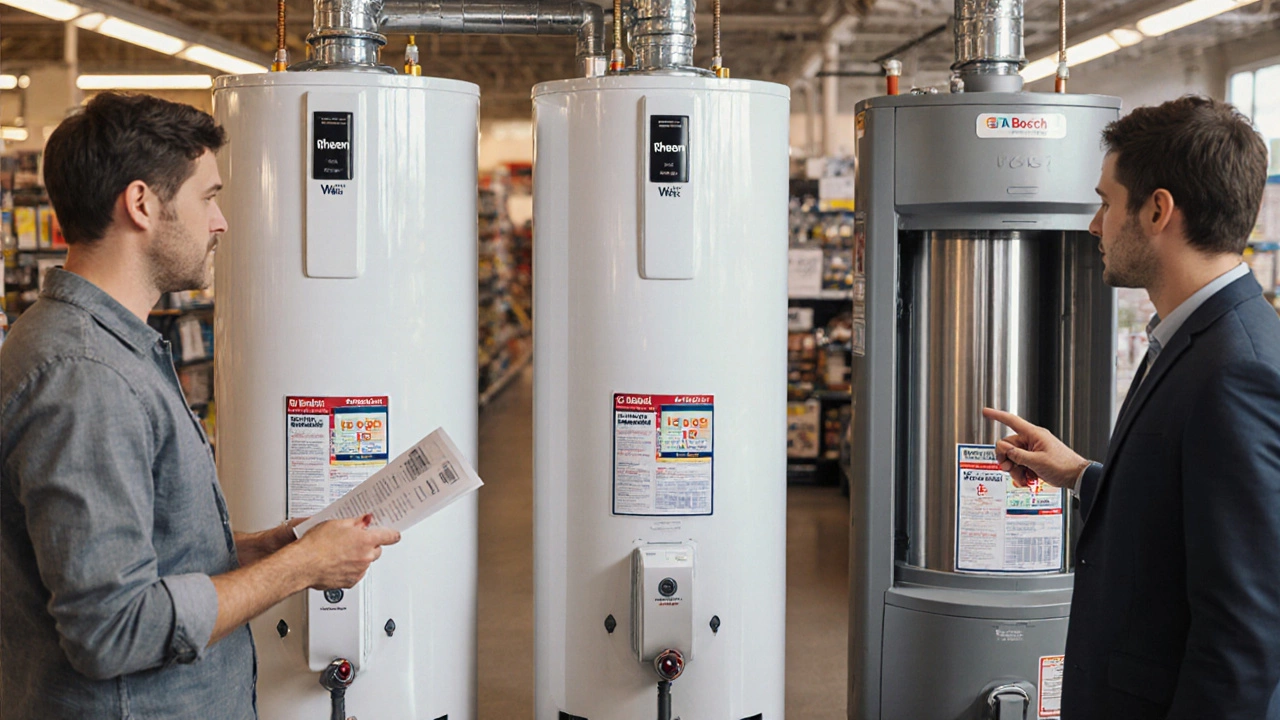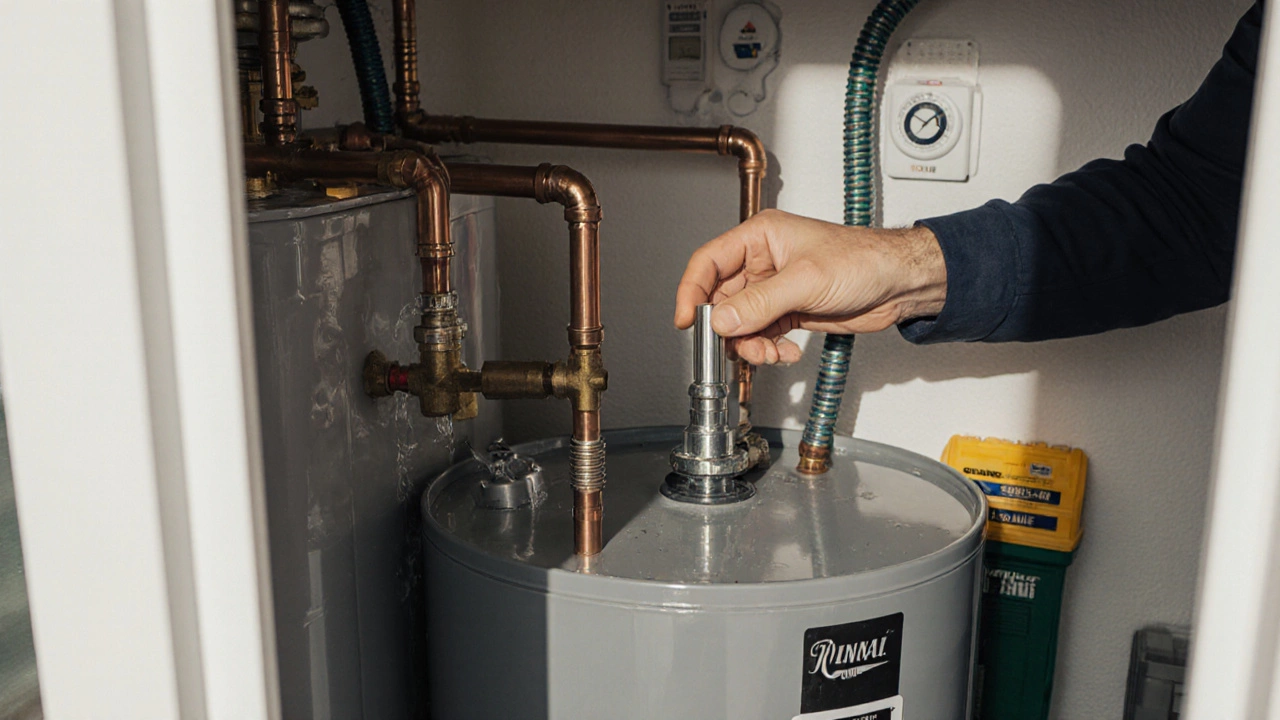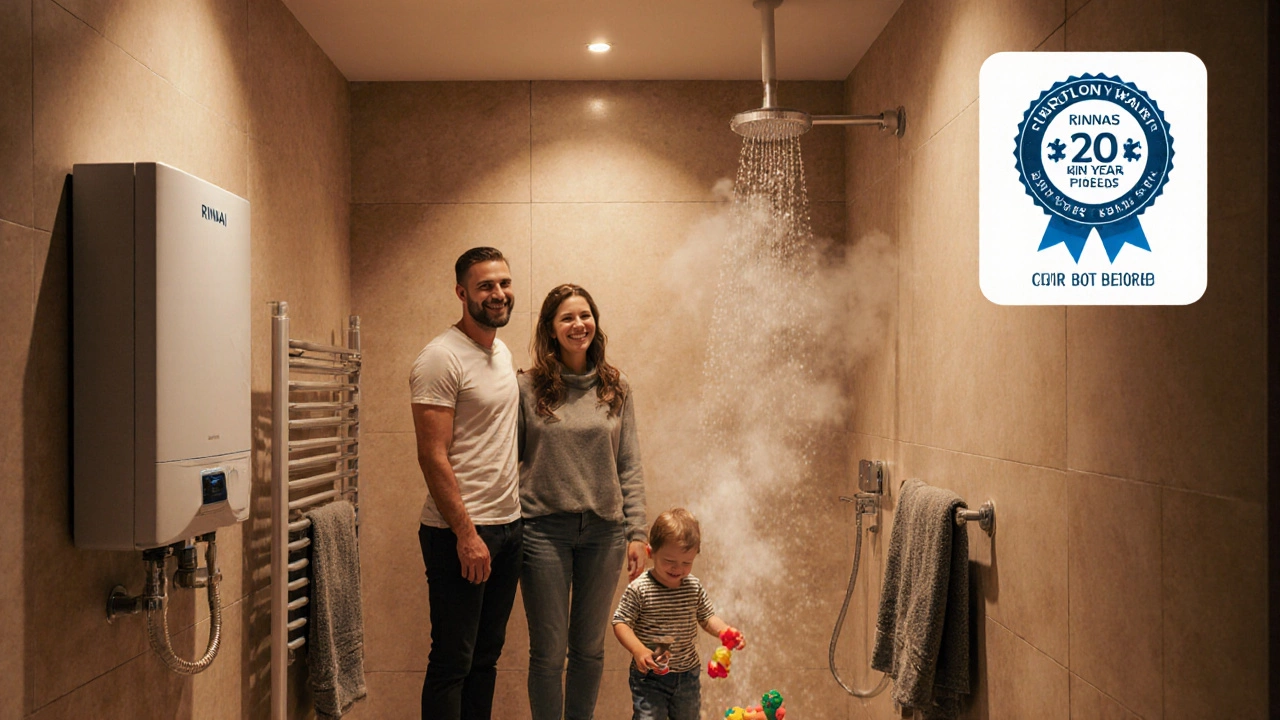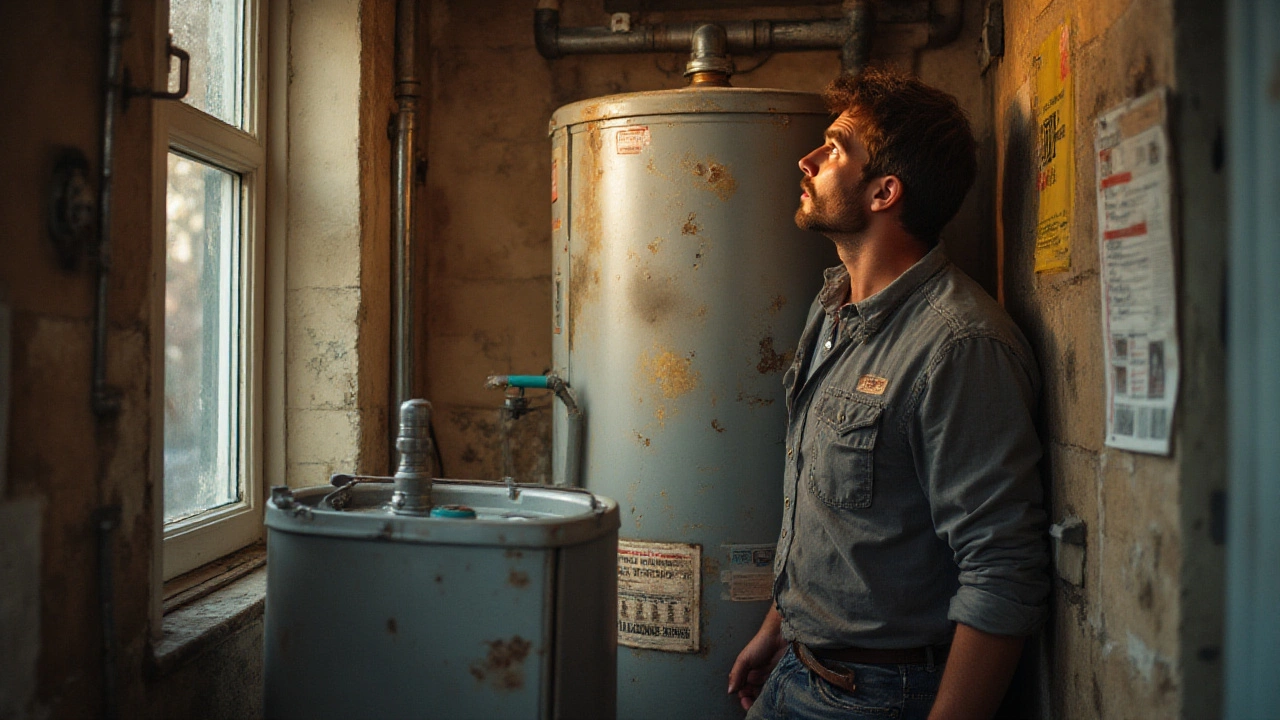
- 12 Oct 2025
- Gideon Thornton
- 0
Water Heater Lifespan Estimator
Estimate Your Water Heater's Lifespan
Answer a few quick questions to see how long your water heater might last based on real-world data from the article.
Estimated Lifespan
--- years
When you’re planning a new hot‑water system, the first question that pops up is: "Will this thing last a decade or two?" A water heater that quits early turns a simple upgrade into a costly nightmare. Below we break down the brands that consistently outlive their rivals, the factors that drive longevity, and practical steps you can take to squeeze every extra year out of your unit.
Key Takeaways
- Tank‑type steel models from Rheem and Worcester Bosch routinely hit 15‑20years with proper care.
- Brands offering a 10‑year parts warranty (e.g., A.O.Smith, Vaillant) tend to use corrosion‑resistant materials.
- Regular anode‑rod checks, flushing, and protecting the unit from hard water are the single biggest longevity boosters.
- Tankless models from Rinnai and Ariston can surpass 20years, but they demand stricter maintenance.
- Choosing a brand with a strong service network in the UK reduces downtime and extends useful life.
Water heater is a home appliance that heats and stores water for domestic uses such as showers, laundry, and cooking. Its lifespan varies widely based on build quality, water quality, installation practices, and ongoing maintenance.
What Determines a Water Heater’s Lifespan?
Three core elements shape how long a unit stays reliable:
- Materials and construction. Steel tanks with a glass‑lined interior resist corrosion better than plain metal. Copper heat‑exchangers in tankless units add durability.
- Warranty and support. A longer factory warranty usually signals confidence in material choice and design.
- Maintenance routine. Anode‑rod replacement, annual flushing, and protection against hard water dramatically slow wear.
Understanding these factors lets you evaluate a brand’s real‑world durability, not just the marketing hype.
Top Brands and Their Expected Longevity
| Brand | Typical Lifespan | Standard Warranty | Primary Technology | Notable Durability Feature |
|---|---|---|---|---|
| Rheem | 15-20years | 10years parts | Electric & gas tank | Glass‑lined steel tank |
| A.O.Smith | 13-18years | 10years parts | Hybrid heat‑pump | Stainless‑steel inner tank |
| Worcester Bosch | 15-20years | 12years parts | Gas forced‑draft tank | Advanced corrosion‑inhibitor coating |
| Vaillant | 12-16years | 10years parts | Gas condensing tank | Magnesium anode with extended life |
| Baxi | 12-15years | 8years parts | Gas boiler‑type tank | Electro‑galvanised steel shell |
| Rinnai | 20+years (tankless) | 10years parts | Tankless gas | Copper heat‑exchanger |
| Ariston | 18-22years (tankless) | 10years parts | Electric tankless | Self‑cleaning design |

How to Identify a Long‑Lasting Unit
When you walk into a showroom or browse online, keep an eye on these concrete signals:
- Materials list. Look for “glass‑lined steel,” “stainless‑steel inner tank,” or “copper heat‑exchanger.” These indicate corrosion resistance.
- Warranty length. A 10‑year parts warranty is a baseline for durability. Anything lower usually means cheaper internals.
- Energy‑efficiency rating. Higher EF (Energy Factor) often means better engineering, which correlates with longer life.
- Service network. Brands with regional service centres (e.g., WorcesterBosch, Vaillant) can replace worn components quickly, keeping the system alive.
Maintenance Practices That Add Years
Even the toughest unit will rust out if ignored. Follow this simple schedule:
- Flush twice a year. Connect a garden hose to the drain valve, open the valve, and let water run until it’s clear. This removes sediment that eats away at the tank walls.
- Inspect and replace the anode rod. The sacrificial rod pulls corrosion away from the tank. Replace it every 2-4years, or sooner in hard‑water areas.
- Check the temperature‑pressure (T‑P) relief valve. Test it by lifting the lever briefly; water should spurt out. A stuck valve can cause catastrophic failure.
- Monitor for rust or leaks. Small drips often signal corrosion beginning inside the tank.
- Use a water softener if you have hard water. Soft water reduces mineral build‑up, extending both tank and heating elements.
These steps cost less than £30 a year and can add five to ten extra years to a typical unit.
Common Pitfalls That Shorten Lifespan
Even the best‑built heater can die early if you fall into these traps:
- Installing in a cramped space. Poor ventilation raises operating temperature, accelerating metal fatigue.
- Running at excessively high temperatures. Setting the thermostat above 60°C (140°F) speeds up corrosion and scales.
- Ignoring manufacturer‑recommended flush intervals. Sediment builds up faster in areas with high iron content.
- Choosing a brand without local support. Delayed repairs often lead owners to replace the whole unit prematurely.

Choosing the Right Brand for Your Home
Take a quick look at your situation and match it with the brands that excel in that niche:
| Need | Recommended Brand | Why It Fits |
|---|---|---|
| Large family, high daily draw | Rheem | 15‑gal to 50‑gal options, robust glass‑lined tank, long warranty. |
| Eco‑conscious, low running cost | A.O.Smith (Hybrid) | Heat‑pump technology saves up to 60% energy, stainless inner tank reduces rust. |
| Space‑constrained apartment | Rinnai (tankless) | Compact wall‑mount, copper heat‑exchanger, >20‑year lifespan with proper care. |
| Hard‑water region (e.g., West Midlands) | Vaillant | Magnesium anode and corrosion‑inhibitor coating combat mineral attack. |
| Budget‑first renovation | Baxi | Competitive price, decent 8‑year warranty, easy to service. |
Real‑World Example: A Bristol Family’s Switch
In 2019 a four‑person household in Bristol replaced a 10‑year‑old gas tank (brand unknown) with a Worcester Bosch 45‑gal model. After following the bi‑annual flush schedule and swapping the anode rod at year3, the unit logged 11years of trouble‑free service by 2025-well beyond the 7‑year average for comparable unknown brands. The family saved roughly £400 in repair costs and avoided a premature replacement.
Take the Next Step
If you’re ready to choose a unit that will stick around for at least a decade, start by:
- Listing your hot‑water demand (gallons per day).
- Checking local water‑hardness reports (your council usually provides this).
- Matching the demand and water quality to one of the brands above.
- Scheduling a professional installation that includes a first‑year flush and anode‑rod check.
Doing so puts you on the fast‑track to a hassle‑free hot‑water experience and protects your investment for the long haul.
Frequently Asked Questions
What is the average lifespan of a tank‑type water heater in the UK?
Most modern tank‑type units last between 10 and 15years, but brands with glass‑lined steel tanks and a 10‑year parts warranty-such as Rheem or Worcester Bosch-often push toward the 20‑year mark when maintained properly.
Are tankless water heaters really longer‑lasting?
Yes, tankless models from Rinnai and Ariston often exceed 20years because they have no storage tank that can corrode. The trade‑off is a stricter maintenance regime-annual descaling and regular flow‑rate checks are essential.
How often should I replace the anode rod?
In soft‑water areas, every 4years is sufficient. In hard‑water zones, inspect it every 2years and replace once more than 50% of the core has corroded.
Does a longer warranty guarantee a longer life?
A longer warranty is a good proxy for durability because manufacturers only back products they believe will meet the claim period. However, actual life still hinges on installation quality and regular maintenance.
Can I install a water heater myself to save money?
DIY installation is possible for electric units if you’re comfortable with basic wiring and have a suitable circuit. Gas‑powered heaters require a certified plumber or gas engineer in the UK; otherwise you risk safety violations and voiding the warranty.


